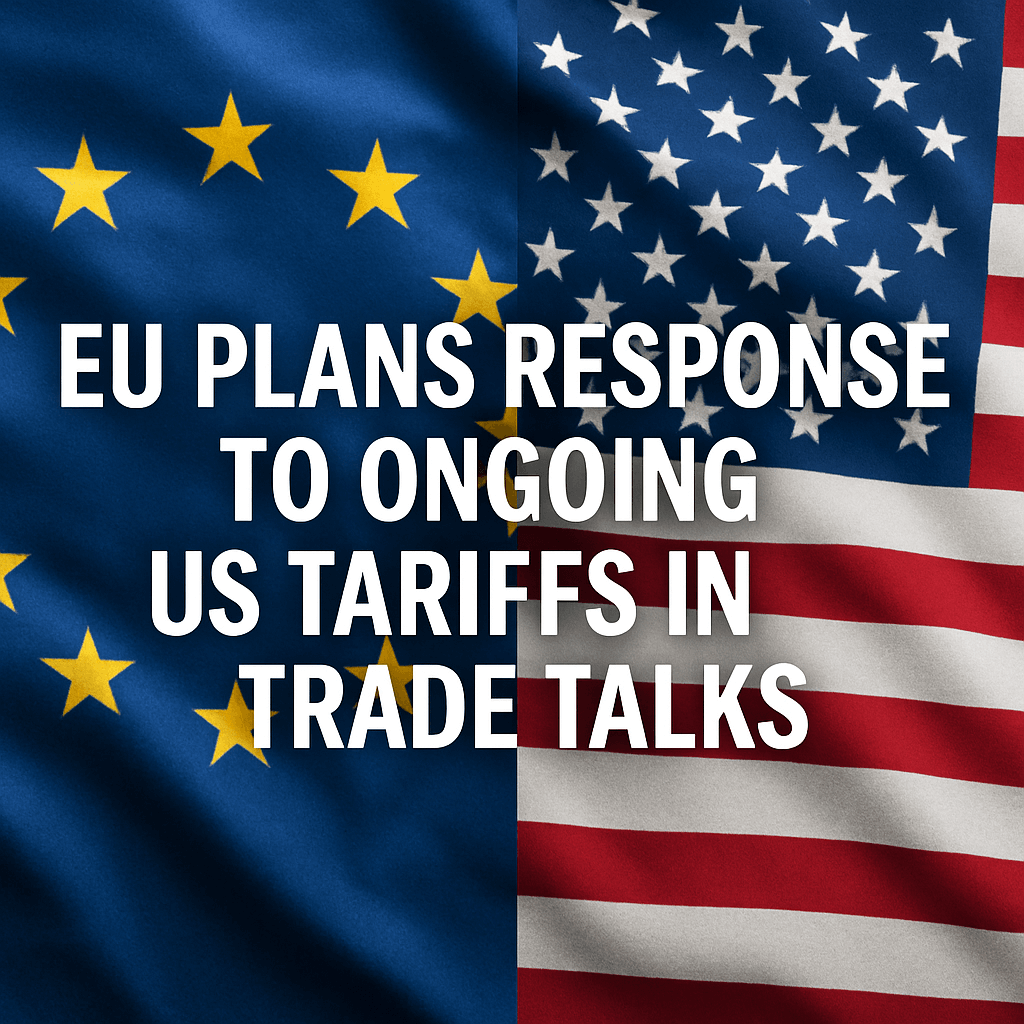EU Plans Response to Ongoing US Tariffs in Trade Talks

Background and Stakes
Since mid-March, the United States has imposed a series of tariffs under Section 232 of the U.S. Harmonized Tariff Schedule, including:
- 25% on steel imports (HTS Chapter 72–73)
- 25% on aluminum imports (HTS Chapter 76)
- 25% on EU-manufactured passenger cars (HTS 8703) and 10% on all other EU industrial goods
These measures cover roughly 70% (€330 billion) of EU exports to the U.S. and have prompted the European Commission to prepare a €95 billion retaliation package under Article I:3(b) of the GATT. The proposed counter-tariff list targets key U.S. sectors including aircraft, agricultural products and energy.
Current Negotiations and Technical Details
Engagement at Expert and Political Levels
“It is very possible that we do not get rid of all the tariffs,” EU official Matthias Jørgensen told MEPs, “then we might have to rebalance on our side.”
Since April, EU Trade Commissioner Maroš Šefčovič has conducted three official visits to Washington and held a constructive call with U.S. Trade Secretary Howard Lutnick. Both sides agreed to intensify technical-level discussions on:
- Customs valuation and rules of origin for automotive supply chains
- Harmonization of technical regulations (electrical safety, emissions standards)
- Intellectual property safeguards for emerging technologies
Tariff Schedule Breakdown
Detailed analysis of the U.S. Harmonized Tariff Schedule (HTS) shows that:
- HTS 8703 (passenger cars) and HTS 8704 (light trucks) tariffs could reduce EU auto exports by up to 15% annually, equivalent to €12 billion in lost sales.
- Steel (§232) tariffs target flat‐rolled products (HS 7208–7216), affecting approximately 18 million metric tonnes of EU steel exports per year.
- Aluminum tariffs on HS 7601–7606 cover semi-finished products used in aerospace and automotive manufacturing.
Possible EU Retaliation Measures
€95 Billion Counter-Tariff List
The Commission’s draft retaliation list includes:
- Aircraft: HTS 8802, 8803 (affecting Boeing and related parts)
- Agriculture: soybeans, corn, rice, dairy (HTS 02, 04)
- Energy: liquefied natural gas (LNG) equipment and shale gas machinery (HTS 8411, 8421)
“Letting the current unbalance persist is not an option,” said Commissioner Šefčovič.
Member State Consultations and Lobbying
France, Italy and Spain are lobbying to exclude Bourbon whiskey (HTS 2208) to protect their wine and spirits sectors, citing a 2023 study by the International Wine & Spirits Research Group showing $2.3 billion in annual U.S. sales of European spirits. Meanwhile, the aircraft industry is concerned that Boeing’s HTS 8803 codes could draw reciprocal duties on Airbus products under WTO cross-retaliation rules.
Energy and Climate Implications
One potential concession on the table is accelerated EU approval of U.S. liquefied natural gas (LNG) imports under the TEN-E Regulation. Increased U.S. LNG inflows would:
- Enhance EU gas supply diversification, reducing dependency on pipeline gas.
- Support EU climate targets by replacing coal‐fired generation in Eastern Europe.
However, environmental NGOs warn that expanded LNG infrastructure could lock in fossil-fuel reliance and delay renewable deployment.
Investment and Technology Exchange
The EU has proposed zero-to-zero tariffs on all industrial goods in exchange for improved market access for:
- U.S. artificial intelligence hardware (HTS 8471, 8528) and software licensing (HS ex 8523)
- Advanced semiconductor manufacturing equipment
- Biopharmaceutical R&D collaboration
According to a recent Bloomberg analysis, transatlantic venture capital flows into AI startups exceeded $5 billion in 2023. Strengthening investor protections and cross-border data transfer frameworks remains a key negotiation point.
Legal and Regulatory Dimensions
Regulatory autonomy is a red line for both sides. EU officials emphasize that:
“EU legislation is not on the table,” Jørgensen told MEPs, underscoring that non-tariff barriers such as REACH chemical regulations or GDPR privacy rules will remain outside the scope of any trade accord.
U.S. negotiators, citing the Trade Promotion Authority, insist on reducing duplicative certification for industrial goods under UL and CE marking schemes, highlighting potential cost savings of 2–3% per product line.
Outlook and Next Steps
As the 27 EU trade ministers prepare to meet again, key milestones include:
- EU Council deliberations on the €95 billion retaliation list (June)
- Technical working groups on rules of origin and customs procedures (July–August)
- Ministerial meeting with USTR Ambassador Jamieson Greer (September, OECD summit sidelines)
If no agreement is reached, the Commission may activate retaliation under WTO Article I:3(b) by end-Q3, potentially triggering a full-scale transatlantic trade standoff.